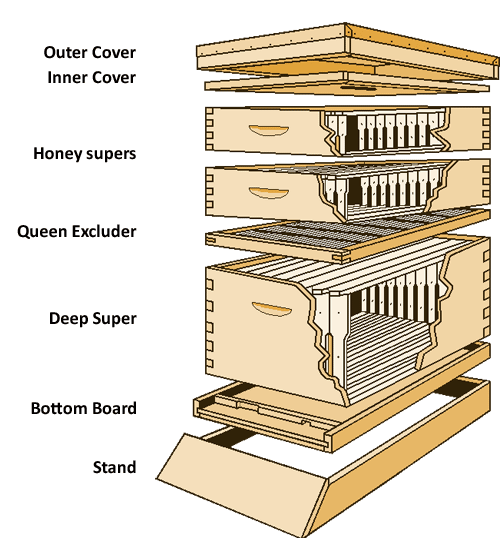Yesterday, we went to visit our new mentor's hives! It was to be our first ever hive experience and we had no idea what to expect. We had heard horror stories of people buying the equipment to get into beekeeping only to realise they couldn't cope once in the middle of the rabble of bees. (Did you know that a rabble is the collective noun for a group of bees that aren't swarming? As an English teacher, this new knowledge has pleased me greatly.) We wanted to make sure that we were happy being in the middle of a rabble before committing to the hobby/lifestyle, which can be quite pricey, initially.
We arrived, got suited up and learnt about how to put the suits on properly - loops around the fingers and into wellies to make sure we were plugging all the gaps. Sadly, we didn't get any pictures of us in our suits as we were both a bit nervous and concentrating on not making any mistakes or a fool of ourselves! (TBC)
Next, I learnt how to ignite and use a smoker (see below) and then we entered the bee compound at the bottom of the garden. Both of us were nervous so naturally, I went first.
Cries of
"Human shield!"
echoed across the garden from my ever-loving and protective fiance, Greg. The bees were buzzing but they were fewer and smaller than I had expected, that is until we opened and delved deeper into the hives.

A bee smoker - used to keep bees calm.
We smoked the bees to calm and encourage them down into the bottom of the hive. This is to trick the bees into thinking there is a wildfire so that they gorge themselves on resources like pollen and honey, to prepare in case they have to evacuate the hive. It calms them because once full, the bees are lazy and lethargic - like you would be after a huge Sunday roast!
We removed the roof of the first hive and were looking for capped honey (cells which are filled with honey and stoppered up with beeswax to preserve it for when it's needed such as during winter or an emergency - such as the aforementioned wildfire). We removed the full frames (where the bees make the honey) from the supers (see below) as well as generally inspecting the brood (the bees at all stages of their development).
Cross-section of a hive. Developmental life cycle of a bee.
It took me a while to be able to identify the eggs but once I knew what I was looking for (a white hair like protuberance in the bottom of the comb) I was fine.

The squishy white curls ^ are larvae and the long white hairs ^ are eggs.
We removed some of the extraneous brace comb (unwanted comb that bees produce to stick the hive to trees in the wild - it is usually on the top of the frames) and even saw a newly matured bee eating its way out of the comb - apparently, this is quite rare to see on a first visit (good luck?)
Although we were keen to see the queen we were told we probably wouldn't see her but if there were eggs then there was a queen and our mentor was happy with that.
Overall, it was quite an overwhelming experience, especially as I felt quite ignorant and didn't know what to do. The further we went into the hives obviously the more the rabble came out. They were flying all around and did try to get into our suits but none succeeded. No stings for us today! Horray! I tried to remain outwardly calm, listen to their noise and the feel of them - a kind of vibrating in the chest but maybe that was just the butterflies?
The only uncomfortable part really was not knowing what we were doing so I have set myself homework! (Ever the academic!) I'm going to make sure I watch some beekeeping youtube videos (Greg has highly recommended The Norfolk Honey Company) and that I read one of the books I got Greg for his birthday.

Greg and I decompressed on the drive home and decided that we're definitely up for it. We've ordered some bee tools, our suits (I've ordered some super exciting wellies since my rainbow smartie ones split!) and are making enquiries in the local community about where we might have our apiary (the place where we keep the hives). We're also on the waiting list for some hives and bees.
At the moment we're hoping to go for National Polyhive - these seem to us to be the most eco-friendly (they may be made of polystyrene but they last for around twenty years if looked after properly), they're lighter and so more manageable for Greg's pathetic arms and they seem better for the bees as they're insulated in winter and remain dry which is useful for us in rainy Blighty.
BREAKING NEWS: We've just got back from meeting a local farmer who is happy for us to have our bees on his land. It's the perfect location for both us and the bees and we're super excited to make a start as soon as possible!
Make sure you check back here soon to read more of our beeventures!
We'll be sure to update as soon as we have any more news about the acquisition of our bees.

Also, thematically exciting wellies have arrived!



